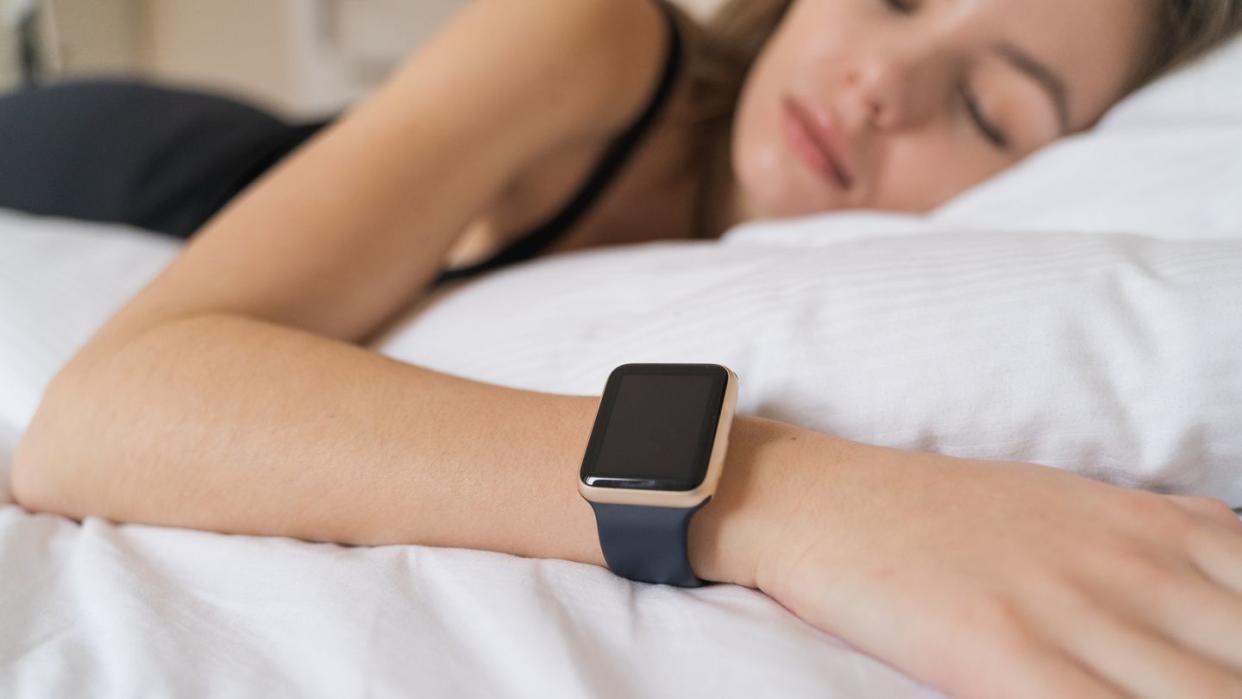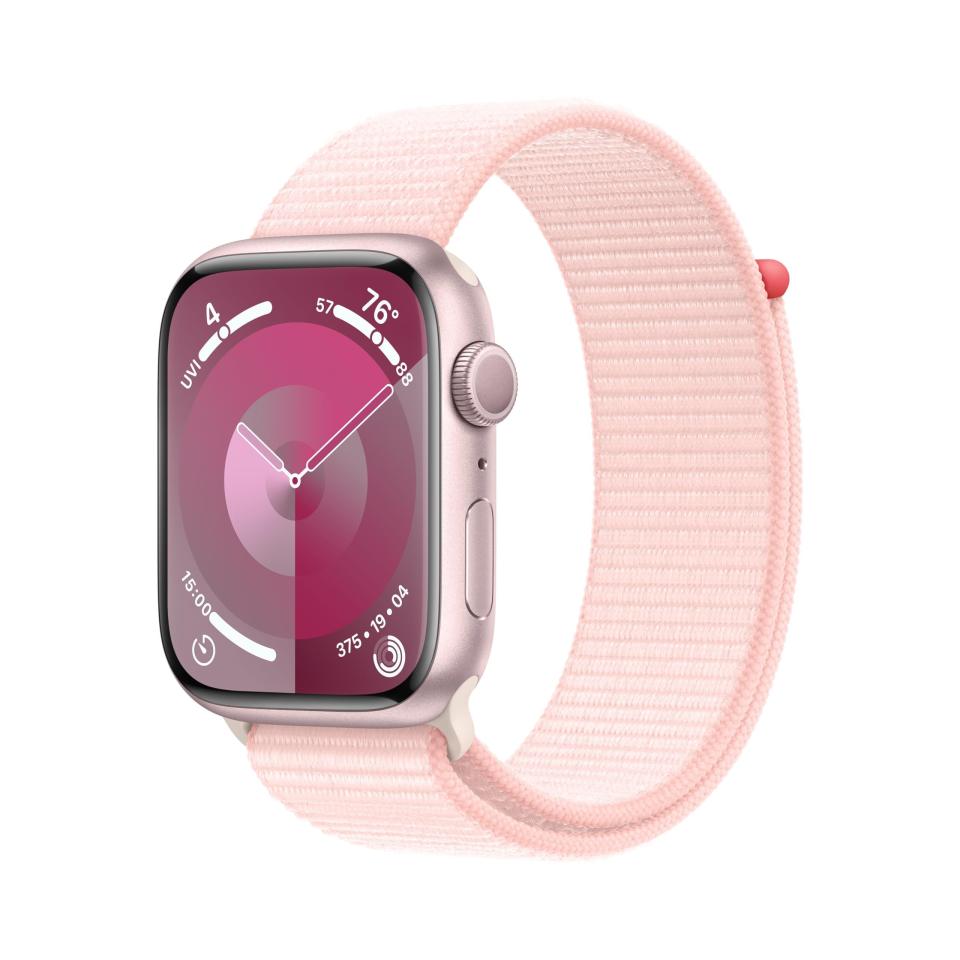When Should You Bring Your Apple Watch's Sleep Tracking Data to a Doctor?

"Hearst Magazines and Yahoo may earn commission or revenue on some items through these links."
Whether you're a data head or a health nut (or a little bit of both), the Apple Watch's fitness-tracking capabilities are great for helping you keep tabs on your overall wellness around the clock. Aside from monitoring your daily physical activity, heart rate, and menstrual cycle, Apple's proprietary Sleep app tracks your vitals and the length of your sleep cycles as you snooze.
While we all have periods of less-than-great sleep, if you're concerned that a recurring sleep issue could be health-related, when does it make sense to bring your Apple Watch's sleep tracker data to a doctor? And what data would they be most interested in seeing?
We spoke to Dr. Akua Ampadu, MD, a board-certified, internal medicine-trained hospitalist physician and primary care expert for TYLENOL, about the benefits of using a sleep tracker and what data is most important to share with your primary physician at a physical exam.

Watch Series 9 Smartwatch
amazon.com
$370.54
What Apple Watch sleep-tracking data is most important to a doctor?
Using a sleep tracker like an Apple Watch will give you a lot of information, but as long as you're not obsessing over every small blip, it can be very helpful in learning about what is and isn't working about your current sleep setup.
“Digital sleep tracking devices have great benefits when trying to improve your sleep,” Dr. Ampadu says. The most useful features to your overall health are ones “that can detect snoring, heart rate changes, sleep duration, and how often you wake up in the middle of the night.”
It's a good idea to keep an eye on your sleep tracker data to note any major shifts over time. “If you find that any of these statistics are abnormal or you notice a change in your otherwise normal pattern, it should be brought to your doctor’s attention. An underlying medical condition may need to be ruled out,” Dr. Ampadu says.
While an Apple Watch cannot diagnose a condition you may have, it can help identify the symptoms — and this can be crucial if you sleep alone and don't have a bed partner to tell you if you've been snoring or moving around in the night. By bringing your sleep tracker data to your doctor, you may be able to identify potential ailments based on the patterns it tracks.
“Sleep apnea is a common condition which causes snoring, insomnia, or daytime sleepiness. And restless leg syndrome is a general discomfort within the legs creating an urge to move them, leading to frequent waking up at night and daytime sleepiness,” says Dr. Ampadu.
What sleep data can you track with an Apple Watch?
The Apple Watch sleep tracker can monitor the following data as you wear it to bed:
Estimated times you fall asleep and wake up
Length and variation of sleep stages
Respiratory rate while sleeping
Heart rate while sleeping
Wrist temperature (on Apple Watch Series 8 and 9)
All this information can be helpful to your doctor in discerning whether you have a diagnosible condition. Your respiratory rate, heart rate, and body temperature comprise your main vital signs and can give a clear indication if something is off.
The times you fall asleep and wake up may help give you and your doctor an understanding of your nighttime habits — if you're going to bed later than you should or at varying times from night to night, you may be able to change this without medical intervention. The length and variation of sleep stages could potentially indicate underlying health issues or external factors in your environment that are habitually disrupting your sleep (more on this below).
As of this writing, the Apple Watch's Sleep app cannot detect if a user is snoring, nor can it predict whether they have sleep apnea. However, Bloomberg reports that these enhanced health features (among others) may be coming in the next iteration of the Apple Watch.
The Apple Sleep app also has other features beyond tracking your vital signs, including setting a sleep schedule, screen-locking capabilities, and a gentle wake-up alarm.
How to wear an Apple Watch for sleep tracking
If you plan to track your sleep using the Apple Watch, you can wear it as you normally would. Make sure that the band fits comfortably around your wrist while the device is making contact with your skin.
There's no need to wear your Apple Watch on the inside of your wrist to get a better pulse reading. While some users do this and attest that their readings are still accurate, the device was designed to be worn on the outside of the wrist.
If you choose to wear the Apple Watch through the night, keep in mind that you'll need to decide when to charge your device. It takes about 2.5 hours to fully recharge the battery, so plan to dock it on your Apple Watch charging station during your downtime when you don't need to be wearing it.
What other types of issues can impact sleep?
If your sleep tracker shows that you've been experiencing fragmented sleep, there's no need to start panicking. According to Dr. Ampadu, there are many contributing factors to a poor night of sleep, which may include the following:
Too much light or noise in your bedroom.
Using digital devices like smartphones, laptops, or tablets while in bed.
Consuming caffeine or eating a heavy meal close before bedtime.
Minor aches and pains that keep you up longer than anticipated.
The good news is that most of these issues can be easily resolved by paying attention to what you consume around bedtime and how you set up your environment.
“I recommend that you power down electronics at least 30-60 minutes before bedtime, invest in quality blackout curtains if there is too much light in your room, and change eating habits if necessary to allow your body more time to digest before sleeping,” she says.
Also, instead of powering through any pain you have, try to address it in the hours leading up to bedtime.
“It’s OK to use a nighttime sleep aid occasionally to promote sleep when you’re experiencing minor aches and pains. I recommend TYLENOL PM Extra Strength Caplets, which is a nighttime sleep aid and pain reliever that's non-habit forming when used as directed,” says Dr. Ampadu. “It helps you fall asleep, stay asleep, and quickly relieve minor pain."
Finally, it is possible to have a clean bill of health, an optimal sleep environment, and impeccable sleep hygiene and still experience interrupted sleep. You may simply be experiencing the changes that come with getting older.
“Aging can impact circadian rhythms,” says Dr. Ampadu. “As we age, melatonin (a natural hormone which helps regulate sleep cycles) can diminish. This may lead to more fragmented sleep patterns, with earlier bedtimes and earlier wake-up times.”
So, for the sake of your sleep quality, consider this your sign to go ahead and treat yourself to that new set of sheets and pillows — every little bit helps, right?
You Might Also Like

